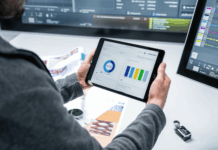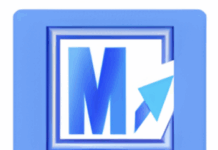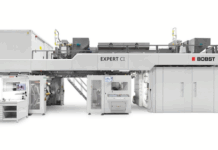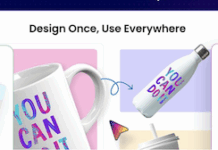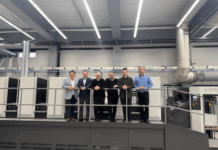Flexible packaging paper is regarded as much more sustainable than solutions made of plastic. Where an efficient circular economy is already in place, recycling rates of well over 80 percent are being achieved. The future of flexible paper-based packaging is bright, with flexible packaging papers predicted to enjoy annual average growth of over 4.5 percent by the end of the decade. This is primarily thanks to their sustainable properties, especially when compared with plastic packaging.
An expert survey entitled ‘The future of packaging 2030’, which was conducted by Baden-Württemberg Cooperative State University (DHBW) Heilbronn in collaboration with Heidelberger Druckmaschinen AG (HEIDELBERG), has now corroborated this development. The results indicate that paper-based packaging solutions will increasingly play a dominant role in Europe by 2030, as long as key technological and economic challenges relating to coated paper packaging can be resolved.
The study is based on expert interviews with trade and industry decision-makers, who are underpinning the ongoing trend toward paperisation – the substitution of plastic with paper – in the packaging industry. According to Professor Carsten Kortum, who led the study and is also in charge of DHBW’s Business Administration – Management in Commerce degree programme, ‘It’s not just a trend, it’s a systemic change driven by new regulatory pressure, rising environmental awareness and associated changes in consumer behaviour, and technological innovations.’
New EU Packaging Regulation (PPWR) Acting As Catalyst
The new EU Packaging and Packaging Waste Regulation (PPWR), which sets ambitious targets to be achieved by 2030, is a key driving force and something of a catalyst, especially for flexible paper and cardboard packaging. Besides harmonised standards, it places a clear focus on sustainability, resource efficiency, and the circular economy. This includes banning certain single-use formats, making recycled content mandatory in packaging, and using standardised recycling symbols. ‘The PPWR is putting trade and industry under significant pressure to act,’ emphasised Kortum. ‘There’s also a lack of clarity, though, so businesses are asking for transparent standards and economic incentives,’ he continued. Moreover, the regulation is speeding up the process of consumers coming to see packaging as a symbol of sustainability and brand responsibility.
Challenges Associated With Coated Packaging
According to the study, although paper packaging scores highly in terms of sustainability, consumer image, and recyclability, it also involves major challenges. Plastic packaging is cheaper than fibre-based solutions in many cases, and consumers are often unwilling to pay the additional cost. What’s more, the need to fulfil important barrier functions for food products, beverages, cosmetics, and certain non-food items is stretching paper packaging to its technical limits. Paper does not act as a barrier to moisture, oxygen, or grease. Consequently, either hybrid paper-plastic solutions or functional coatings for monomaterials are required, and such options still often result in limited sustainability. This makes it clear that further technological innovations are needed if paper packaging is to be a competitive alternative to plastic in all areas of application.
Technological And Sustainable Innovations For Coated Packaging Solutions
The cost-effective application of barrier coatings on an industrial scale plays a key role when it comes to the quality, reliability, and cost-efficiency of paper packaging. HEIDELBERG is therefore working with Solenis, a manufacturer of specialty chemicals, on developing a cost-effective process to integrate coatings for fibre-based packaging directly into the existing web flexo printing process using the Boardmaster press from HEIDELBERG. This will enable barrier coatings to be applied and combined inline with register accuracy. The purpose of the collaboration between HEIDELBERG and Solenis is therefore to optimally coordinate the individual components of the Boardmaster, the chemical composition of the Solenis barrier coatings, and all the associated process technology for the benefit of packaging producers.
HEIDELBERG Publishes White Paper On Position Of Fibre-Based Options In Packaging Mix
HEIDELBERG has also published a white paper on the current position of fibre-based solutions in the packaging mix. This can be downloaded for free from the HEIDELBERG website. The white paper provides information about various aspects relating to the sustainability of paper packaging, including recycling rates, biodegradability, carbon footprints, and an effective circular economy. The advantages over plastic packaging are set out clearly, while other topics include markets that are growing especially strongly, such as India, and the significance of the new EU packaging regulation.
Click here for the study and white paper.
HEIDELBERG GRAPHIC SYSTEMS SOUTHERN AFRICA
+27 86 142 4756
heidelbergsa@heidelberg.com
www.heidelberg.com/za




